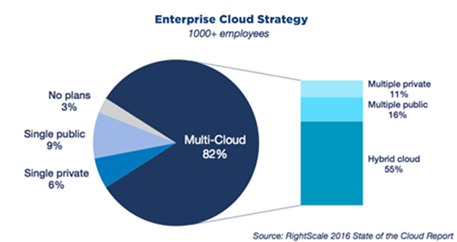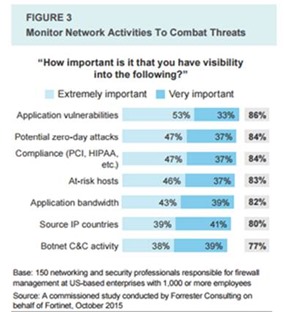구름: 분산 환경을 위한 보안 중앙화
모든 것에는 일종의 반복적인 순환이 있습니다(적어도 지금 돌이켜보면 그렇게 보입니다). 앱 아키텍처와 사용 방식의 변화가 네트워크에 새로운 기술을 필요로 하는 것을 촉진합니다. 소비자 또는 기업 지표(이익과 생산성)를 통해 측정하든, 애플리케이션의 성공을 방해하는 과제를 해결하도록 설계된 기술입니다.
가용성과 성능은 일반적으로 충족해야 할 첫 번째 과제입니다. 그리고 (항상) 보안은 마지막에 찾아옵니다. 운영 위험의 구성 요소와 거의 완벽하게 일치하는 세 가지 우려 사항은 모두 개별적이고 타겟팅된(우리는 이를 '포인트'라고 부름) 솔루션으로 답변하는 경향이 있습니다.
주기의 어느 시점에서 조직은 배포한 솔루션이 너무 많고 운영 예산을 낭비하는 데 기여하고 있다는 사실을 깨닫게 됩니다. 그것이 바로 "솔루션 확산"입니다. 그래서 그들은 자연스럽게 예산과 인력에 대한 운영 부담을 줄이기 위해 통합이나 중앙 집중화를 모색합니다.
클라우드는 앱 아키텍처를 변경하는 방식 중 하나로, 운영 및 재정적으로 매력적인 또 다른 환경을 옵션으로 제공합니다. 많은 조직들이 확실히 그 이점을 활용했으며 오늘날에도 계속 활용하고 있습니다. SaaS가 "클라우드" 애플리케이션 환경에서 가장 큰 부분을 차지하는 반면, 퍼블릭 IaaS 및 PaaS 제공은 조직을 유치하는 데 있어 최소한 어느 정도 성공을 거두기 시작했습니다.
이러한 움직임은 운영상 단절된 환경을 초래했을 뿐만 아니라, 전통적으로 보안이 필요한 "경계"로 여겨졌던 것에 극적인 변화를 가져왔습니다. 더 이상 네트워크의 가장자리에 경계가 존재하지 않으며, 기업용 라우터와 방화벽이 트래픽에 대한 책임을 공급업체와 인터넷에 전가하지 않습니다. 오히려 여러 개의 경계가 있고, 각각은 (적절하다고 말하고 싶습니다) 하나의 응용 프로그램을 중심으로 배치됩니다.
각 애플리케이션을 보호하는 것이 가장 중요합니다. 이는 논쟁의 여지가 없습니다. 애플리케이션은 기업이나 소비자를 불문하고 기업의 데이터 보관소로 가는 게이트웨이입니다. 적절한 보안 없이 애플리케이션을 배포하면 애플리케이션이 악용될 수 있으며, 전달, 처리, 조작하도록 설계된 데이터가 노출될 수 있습니다.

데이터 센터에서 온프레미스로 발생하는 솔루션 확산과 클라우드 환경 전체에서 발생하는 솔루션 확산이라는 개념에는 거의 차이가 없습니다.
단, "중앙화"는 여러 솔루션을 하나의 솔루션으로 통합하는 것만큼 쉽지 않습니다.
아니면 그럴 수도 있겠네요.
솔루션 확산의 원인인 클라우드는 각 애플리케이션을 별도의 경계로 간주하는 개념에 맞춰 최소한 보안 솔루션을 중앙 집중화해야 할 필요성을 해결하는 완벽한 솔루션인 것으로 밝혀졌습니다.
중요한 애플리케이션 보호(네트워크 및 애플리케이션 계층 보안)를 클라우드에 중앙 집중화하면 조직은 솔루션 확산을 줄일 수 있는 기회를 얻습니다. 이렇게 하면 배포 위치와 관계없이 모든 애플리케이션에서 보안의 일관성이 높아질 뿐만 아니라, 로그 확산이 줄어들고 이벤트 상관 관계가 간단해져서 보안 담당자와 프로세스 모두의 부담이 줄어듭니다.
볼륨형 네트워크 및 애플리케이션 계층 공격을 모두 탐지하고 차단해야 하는 필요성을 해결하는 중앙 집중식 솔루션을 선택하면 네트워크 및 보안 전문가의 부담이 더욱 줄어들고, 조직이 애플리케이션 위협에 대한 가시성을 확보해야 하는 필요성도 해결됩니다.

Fortinet의 의뢰로 Forrester가 실시한 연구에 따르면, 애플리케이션과 네트워크 특성에 대한 가시성은 네트워크와 보안 전문가 모두에게 중요한 것으로 나타났습니다. 다양한 위치에 분산된 많은 애플리케이션에 대한 보안 감시자 역할을 할 수 있는 단일 클라우드 기반 솔루션으로 두 가지 모두를 포괄할 수 있는 기능은 오늘날의 클라우드 분산 환경에서 필수적입니다.
DDoS와 웹 애플리케이션 보안은 오늘날의 고위험, 고용량 "애플리케이션 보호" 게임에서 모두 중요합니다. 두 가지 모두를 단일 클라우드 기반 솔루션으로 통합하면 앱이 배포된 위치에 관계없이 적절한 앱 중심 경계를 설정하는 동시에 보안을 중앙 집중화해야 하는 필요성을 해결할 수 있습니다.
온프레미스에서 앱 중심 경계를 설정하는 것은 불가능합니다. 그렇게 하면 구조상의 단점이 운영상의 이점보다 더 큽니다. 그러나 동일한 개념을 클라우드 기반 서비스로 클라우드로 옮기면 중앙 집중화에 내재된 동일한 운영상의 이점을 제공할 뿐만 아니라 구조적으로 타당한 원칙이기도 합니다. 클라우드 기반 솔루션은 더 큰 대역폭에 액세스할 수 있으므로 네트워크 및 애플리케이션 공격의 폭주를 견딜 수 있습니다. 클라우드 기반 솔루션은 더 빠른 파이프에 액세스할 수 있으므로 모든 애플리케이션에 대한 애플리케이션 계층 보안을 활성화하는 데 필요한 추가 "홉"이 상대적으로 영향을 미치지 않습니다. 반대로, 모든 클라우드 기반 앱 요청을 온프레미스 웹 앱 보안 서비스를 통해 라우팅하려고 하면 과도한 지연이 발생할 수 있으며, 내부적으로 확장에 대한 필요성이 커지고 잠재적으로 사용 가능한 업링크 대역폭이 늘어날 수 있습니다.
DDoS 보호를 웹 애플리케이션 보안과 함께 중앙화하는 것은 운영적, 구조적으로 합리적입니다.
융합형 DDoS 보호 및 웹 애플리케이션 보안 클라우드 기반 솔루션에 대한 자세한 내용은 F5 Silverline을 확인하세요. 더 자세히 알아보려면 5월 25일에 Equinix와 함께 하이브리드 DDoS 보호에 대한 라이브 웨비나에 참여하세요 .
